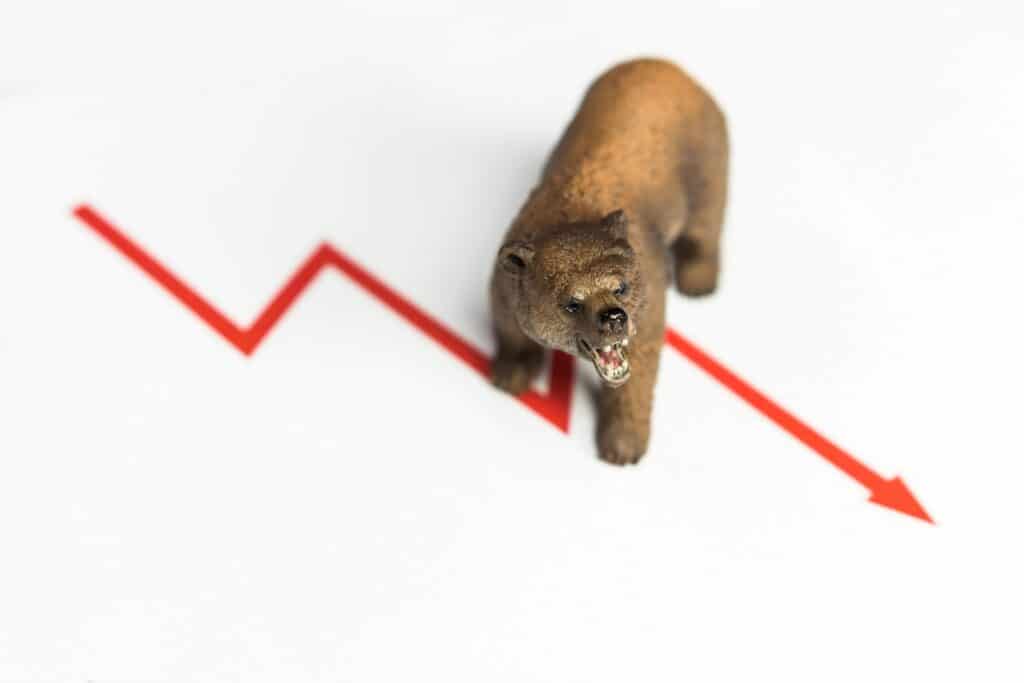
Commonly referred to as VaR, Value at Risk is a widely used risk management tool within the financial industry. It is essentially a way of quantifying the extent of possible financial losses within a firm, investment portfolio or trading position over a specific timeframe. Value at Risk is a frequently used term in forex trading, as well as in other investment scenarios, so it is useful to understand exactly what is meant when you hear traders or analysts talking about VaR.
Traders use VaR as part of their risk management strategy, to measure and control their level of risk exposure. VaR calculations can be used when looking at opening a specific position or can be applied to your whole portfolio. They can also measure risk exposure across an organisation. In this article, we will look at what Value at Risk is, the various ways it can be calculated, and the limitations and problems involved in the ways that those calculations are carried out.
VaR calculations determine the potential for loss along with the probability that the defined loss will occur, over a set timeframe. For any given investment, probability and time period, VaR is defined as the upper limit, or threshold value, that the loss on the investment may exceed, given the set probability under normal market conditions. VaR is commonly used by investment and commercial banks to determine the extent and probabilities of potential losses in their institutional portfolios. It is also used by firms and regulators in the financial industry to gauge the number of assets needed to cover any possible losses.
Ultimately, VaR is used to assess market risk, which is the risk that the value of an investment or trading portfolio will decrease due to the change in value of certain market risk factors. The risk factors include stock prices, interest rates, foreign exchange rates and commodity prices. While many systems aim to standardise market risk measurement to some extent, market risk is not fully predictable, and no form of market risk measurement is infallible.
How is Value at Risk Calculated?
VaR is calculated as a percentage, taking the timeframe into account. For example, a VaR assessment may determine that an asset has a 3% one-month Value at Risk of 2%. This means that there is a 3% chance of the asset losing its value by 2% over a timeframe of one month. This 3% chance of occurrence can then be converted to a daily ratio, which places the odds of a 2% loss at one day per month.
When it comes to the actual methodologies used in Value at Risk assessments, there are three main ways that VaR is generally calculated. The first Value at Risk formula is known as the historical method. This focuses on assessing previous returns by analysing market data from the past 250 days. This is the simplest method of calculating VaR. Returns are looked at in order, from worst losses to greatest gains, based on the premise that past returns inform future outcomes. Historical market data is used to calculate the percentage of change in each market risk factor on each day. This allows for the calculation of possible risk, using current market values, with a total of 250 potential market scenarios.
Another way of calculating VaR is the variance-covariance method. When using this calculation, rather than assuming that the past will inform the future, it is instead assumed that gains and losses are normally distributed. Normal distribution is a mathematical probability distribution that essentially results in a bell curve around the mean on a particular set of data. It is based on the premise that data near the mean is more frequent in occurrence than data far from the mean. Using this calculation, potential loss is framed in terms of standard deviation events from the mean. Standard deviation is a statistic used to measure the dispersion of a dataset relative to the mean and is calculated as the square root of the variance.
VaR can also be calculated using a Monte Carlo simulation. This technique is used to model the probability of different outcomes of a situation that cannot easily be predicted due to the number of random variables involved. The system uses computational models to simulate projected returns given hundreds or even thousands of possible scenarios. It does this by assigning multiple values to an uncertain variable to achieve multiple results. These results are then averaged to obtain an estimate. A Monte Carlo simulation is sometimes referred to as a multiple probability simulation, and at its simplest, that is what it is. It simply computes the probability of several possible future outcomes.
You may also hear investors refer to Conditional Value at Risk (CVaR), which is a risk assessment measure based on Value at Risk but allocating more importance to the more extreme losses in the tail end of the distribution of possible returns, thus allowing for a more conservative approach to exposure to risk.
Related Artices
Examples of Possible Problems with Value of risk Calculations
Risk management is often a misunderstood concept. It is not as vague as some people believe, but it is also far from being a perfect science. There are various issues to be considered when trying to assess the risk attached to a certain asset, portfolio or firm, and there is no one infallible way to predict the level of market risk, even if you are looking at all the important variables.
When analysing data, statistics pulled from a period of low volatility will tend to lead to an underestimation of both the likelihood and magnitude of risk. The systems used in calculating VaR cannot account for every possible scenario and will not take into consideration what is commonly known as black-swan events: rare and generally unpredictable scenarios that are well outside of what could normally be expected in any given situation.
One example of when market risk analysis failed significantly was during the financial crisis of 2008, which was largely caused by the subprime mortgage situation. At the time, Value at Risk calculations greatly underestimated the potential for the occurrence of risk events that were posed by portfolios containing subprime mortgages. The magnitude of risk was also underestimated, which resulted in extreme leverage ratios within subprime portfolios. These underestimations left many institutions unable to cover their losses when subprime mortgage values collapsed, an event that VaR calculations had not factored in.
The financial markets are by nature unpredictable, and extreme volatility in the market tends to happen due to events that have often not been predicted, and in some cases could not possibly have been predicted. This means that the standard ways of calculating VaR will not measure worst-case scenarios. Even the best VaR assessments do not demonstrate what the worst possible losses might be, only what expected potential losses might be. While most investors are aware that unforeseen events can hugely and negatively impact their portfolio, running VaR calculations can sometimes give them a false sense of security, as they may indicate that the potential for large losses is very low.
In addition, there are problems with calculating VaR when it comes to large portfolios as risk analysts will be looking at the risk factors for individual assets, as well as trying to assess the correlations between those assets. Also, it is generally acknowledged that different methods of calculating VaR will yield different results, so no one method should be fully relied upon. Each method has its strengths and weaknesses, as is generally the case with any kind of market analysis, which is why there are no guarantees when it comes to investing, even with carefully implemented market analysis systems.
Conclusion
VaR is a useful risk management calculation that can be used in a variety of scenarios, and it can certainly help investors calculate market risk based on important factors that undoubtedly impact price movements in the financial markets. However, as with any trading tool or system, VaR assessments are not infallible and should only be used as a guideline, with the understanding that rare, unexpected events will not be predicted by standard VaR calculations.
Generally speaking, VaR calculations should be one small piece of a comprehensive risk management strategy, and it should be complemented with other relevant tools and techniques. VaR calculations can certainly be useful. It is, however, important not to allow a prediction of low risk translates to a false sense of security, which could lead investors to ignore other important risk management strategies.
Forextraders' Broker of the Month
BlackBull Markets is a reliable and well-respected trading platform that provides its customers with high-quality access to a wide range of asset groups. The broker is headquartered in New Zealand which explains why it has flown under the radar for a few years but it is a great broker that is now building a global following. The BlackBull Markets site is intuitive and easy to use, making it an ideal choice for beginners.



